case study
Helping to Negotiate for more Affordable Housing
Exploring ways digital and data can improve
the viability assessment process to help councils
deliver more affordable homes


challenge
Affordable housing in the UK is an issue as there isn’t enough to keep up with the demand. A contributing factor is that large developments are built without enough affordable housing allocated to them. To address the issue, the Mayor of London drafted the new London Plan to require 35% of homes on new property developments to be affordable.
The viability assessment is a process of assessing if a development is financially viable for a developer. If the assessment demonstrates that they are at risk financially, developers can negotiate to lower the amount of affordable homes they include in the development.
However, councils don’t always have the skills to challenge developers on the output of their viability assessments. It places them in a poor negotiating position and as a result local governments often lose out on affordable homes. This is not a unique challenge to only Southwark Council. We also partnered and worked with Catapult Connected Places, Tower Hamlets, GLA, and Avison Young.
Opportunity
How might we unlock the value of data in viability assessments to...
- make viability more accessible
- put councils on an equal playing field with developers
- maximise the delivery of affordable homes
- enable further innovation in the planning sector
My role
Discovery phase:
- Joined the last part of discovery to prototype two concepts
Alpha phase:
- prepared prototypes and led user testing sessions of concepts
- Synthesising and creating actions from research
- Testing of prioritised concept with users
- led design crits and reviews with team, users and stakeholders
- created prototypes based on user and stakeholder feedback
- worked with developer to create working alpha prototype
The team included: Delivery Manager, Project Consultant, Data Scientist, Service Designer, Product Designer, Front-end Dev
Approach + Process
Discovery phase
The discovery uncovered key insights and user needs across the end-to-end journey from the start of creating viability assessment to beyond planning approvals.
- 10 research interviews
- Data discovery and technical proof of concept to test and show it was possible to pull data to check viability.
- Mapping the current process
- Synthesising insights and pulling out user needs
- Identifying opportunity areas and generating ideas
- Developing a ‘future state’ map
- Prototyping particular interactions
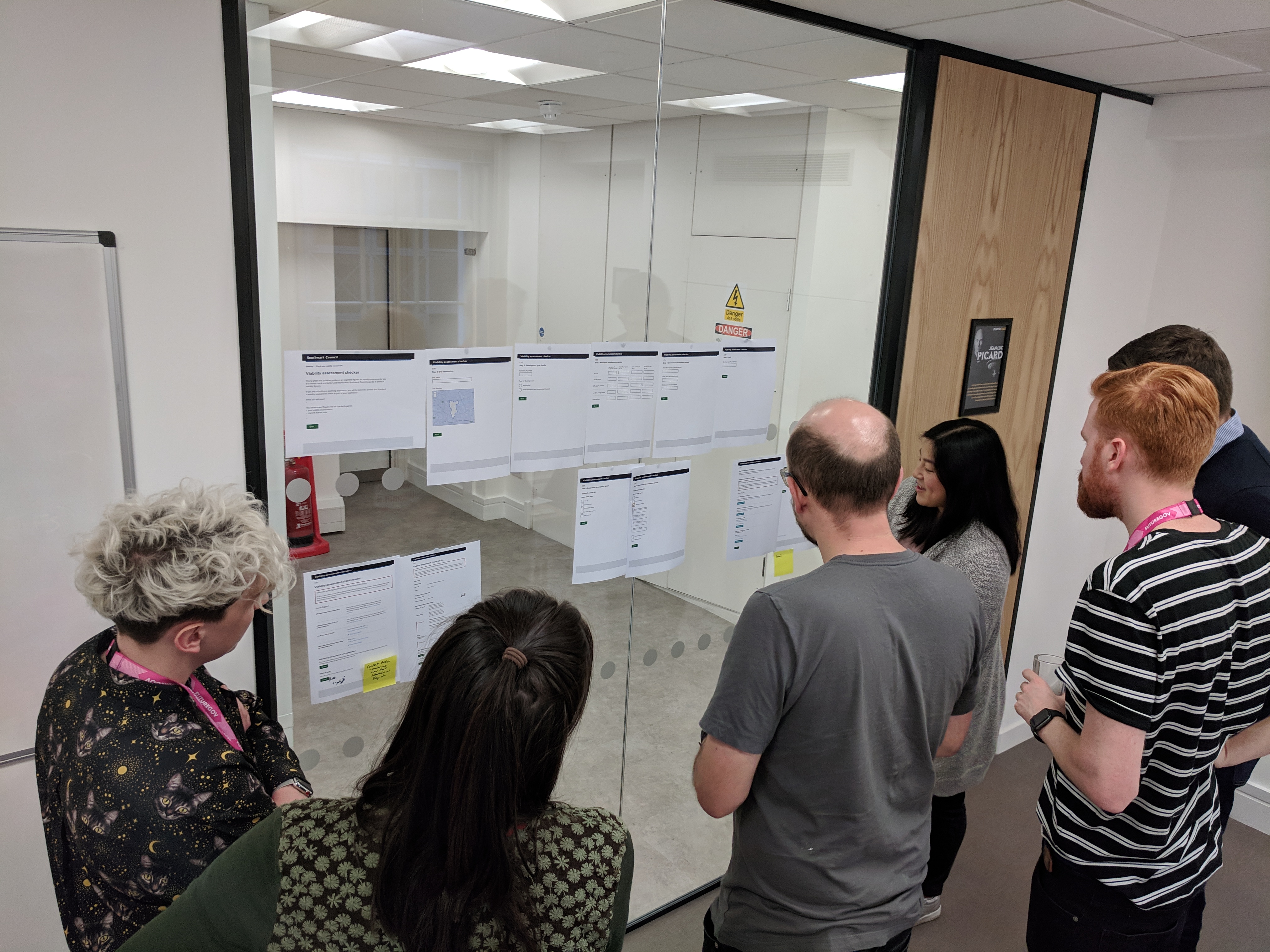
A future state
Two points in the future journey were identified as points to further explore as they had potential impact on viability assessments:
- Before developers submit their planning application – a point to check viability against policy and data
- After a planning application was submitted and planning officers review viability assessments – a point where tools can help them better understand and prepare to challenge viability assessments.
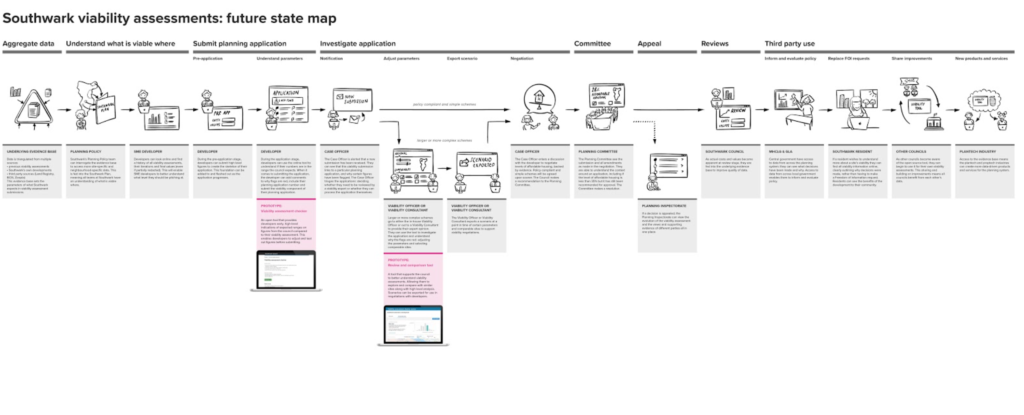
Two concepts from discovery to test
I created these concepts in collaboration with the data scientist, users and stakeholders.
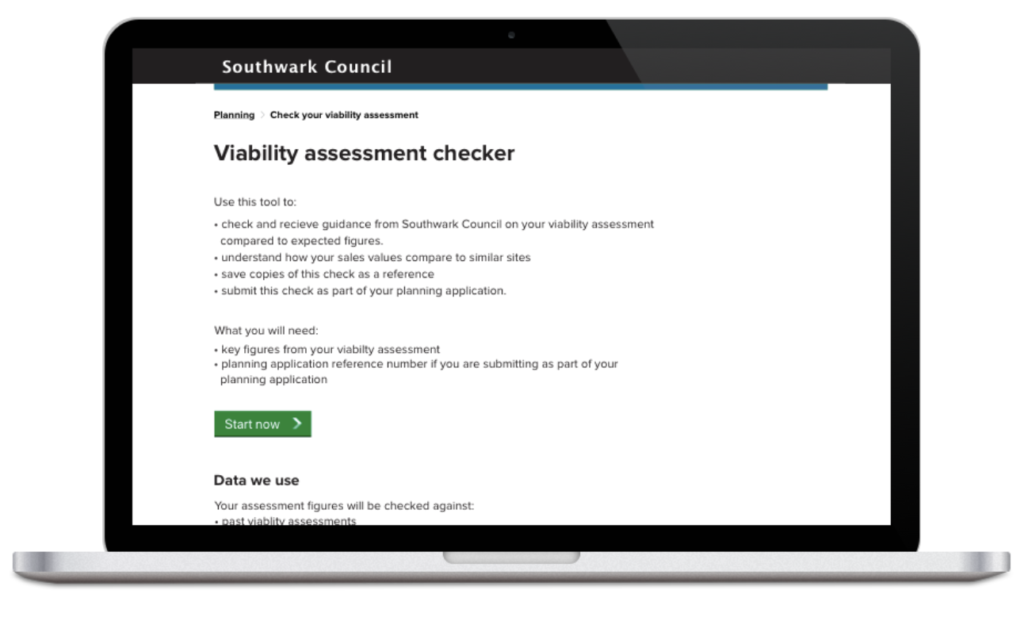
Viability assessment checker
An open tool that provides developers early, high-level indications of expected ranges on figures from the council compared to their viability assessment. This enables developers to adjust and test out figures before submitting. The submission is then viewable by the council.
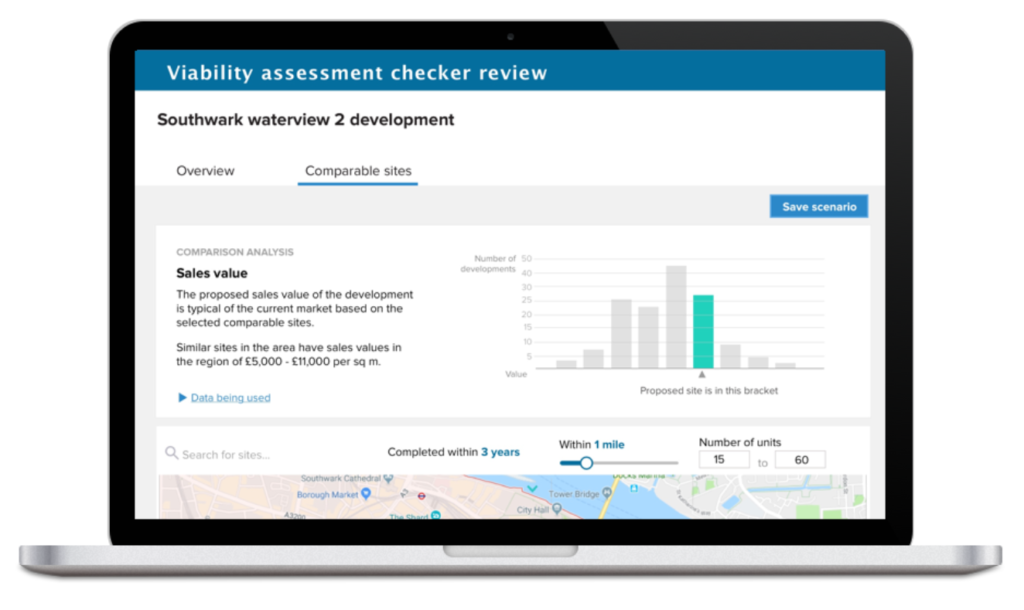
Review and comparison tool
A tool that supports the council to better understand viability assessments. Allowing them to explore and compare with similar sites along with high level analysis. Scenarios can be exported for use in negotiations with developers.
Alpha phase
Testing and validating concepts to prioritise
Validated desirability of concept to build sufficient evidence to inform prioritisation for design of the alpha prototypes.
Testing involved:
- Concept sketches: To present and walk people through to gain feedback and to help prompt discussion.
- Interview questions: To help answer research questions and better understand user needs.
- Data type card sorting: Getting people to sort and prioritise types of data to help understand what people think is most important and how they would use data types.
Tested across 4 councils, the Greater London Authority, and areas of London, Stockport and Manchester:
- 8 case officers
- 5 viability officers
- 2 consultants
- 2 developers – small and medium sized
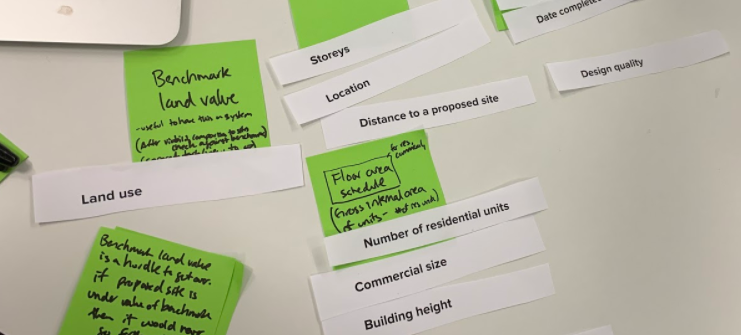

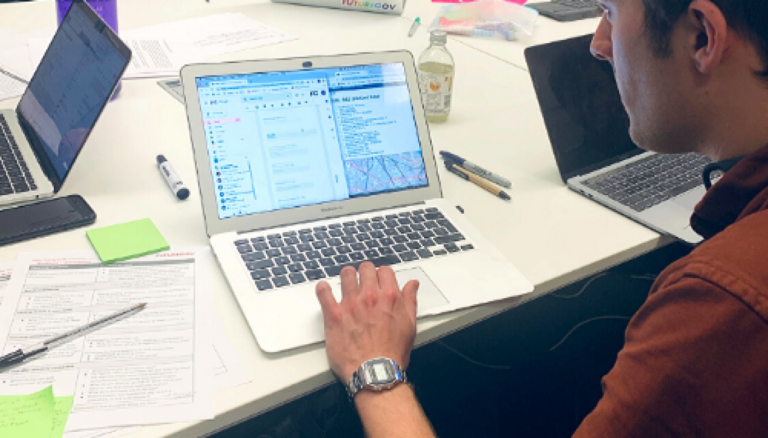
Assumptions tested
Viability assessment checker
Developers:
- see value in using this tool during and/or before their planning application
- are able and willing to input and share data
- Information provided helps developers understand what to amend or be aware of about their viability assessment
Case officers:
- can triage applications based on the checkers results
- are able to process simpler applications without advanced viability expertise
- Data matches what’s available to developers and what is required by case officers
Review and comparison tool
- data gives a better understanding of why there might be potential red flags in viability
- data gives case officers better understanding about viability.
- increases confidence during negotiation with developers
- data shown is seen as reliable and useful by all parties
- Able to find comparable sites
Prioritising the comparison tool
The ‘checker’ element of the checker tool was found to likely be of limited value to larger developers who are already aware of the council’s expectations.
This led to de-prioritisation of the the checker tool, whilst continuing to explore data standardisation and ways of capturing data.
The review & comparison tool could increase the knowledge and confidence of planning officers and provide previously inaccessible data to support better negotiations.
This led to us to prioritise this to take forward and ensure that what we proposed would be accessible to a broad spread of officers rather than targeting those with in-depth viability expertise.
Design iteration of the comparison tool
- These findings fed directly into what should be included in the data standard.
- This led to us starting with a more open, exploratory comparison tool rather than attaching it to particular applications or serving up suggested sites. This makes the tool more suitable to being publicly available to different parties, which came out as a strong desire from testing.
- It also informed which filters to include in the prototype and which information to present, where and how.
Prototyping the new comparison tool
The next prototype was a coded version using some real data. I sketched up the designs and worked with the front-end dev who created the working prototype:
- Surfaces existing developments and planning applications that can be searched & filtered to identify comparable sites.
- The comparable sites allow planning officers to use to compare to a planning application they might be reviewing
- Allows officers to sense check figures & affordable housing proposed by applicants
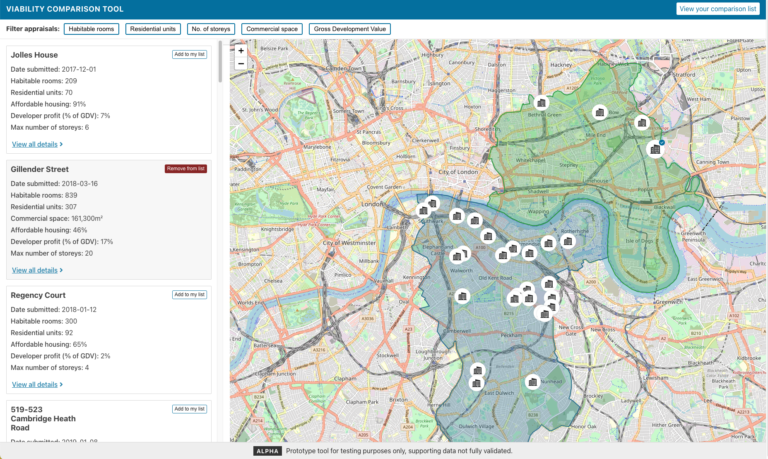
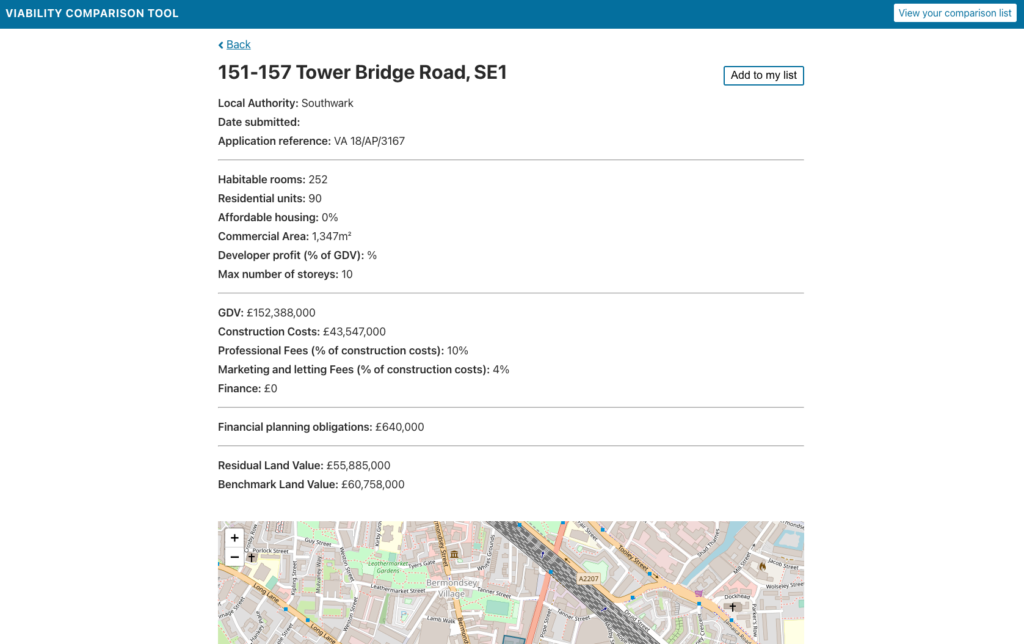
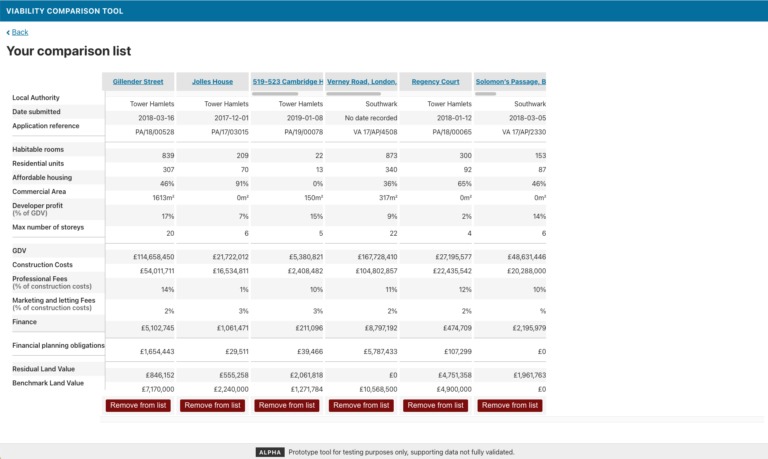
Testing and learning
We tested the coded prototype with case officers, consultants and stakeholders and learned that such a tool could benefit them and provide them confidence and skills to challenge planning applications and developers.
The outcome
- The comparison tool prototype is an example of a digital intervention that could be powered by viability data, supporting council officers to have better, more informed negotiations
- Proved feasibility to build something functional with data.
- Using data as an enabler, we developed a viability data schema , openly available for other projects and organisations dedicated to planning
- We created a video explanation and demonstration to make the process easy to understand.
- And we developed an operational blueprint to share how we envisage the future viability assessment process in a mature council.
Southwark Council
Southwark Council
Learning
- Understanding data to design is so important in order to be able design something of value.
- Working with a data scientist for the first time really showed the value of having this role and skillset in the team to help progress and push the design and our understanding of the capabilities of data. Using real data is important
- Engaging across multiple partners and organisations is key as the service and tools touch upon and draw from more than just the main end user.